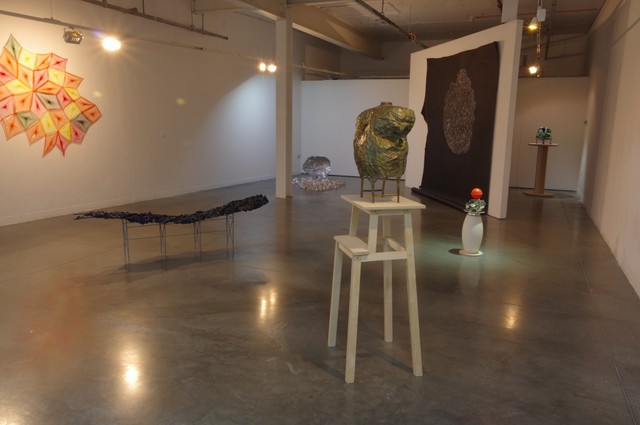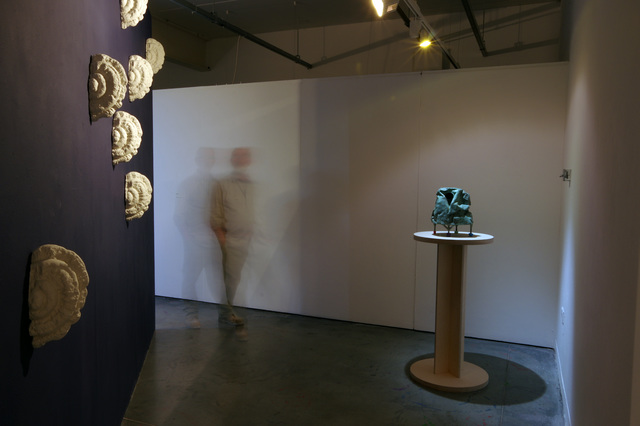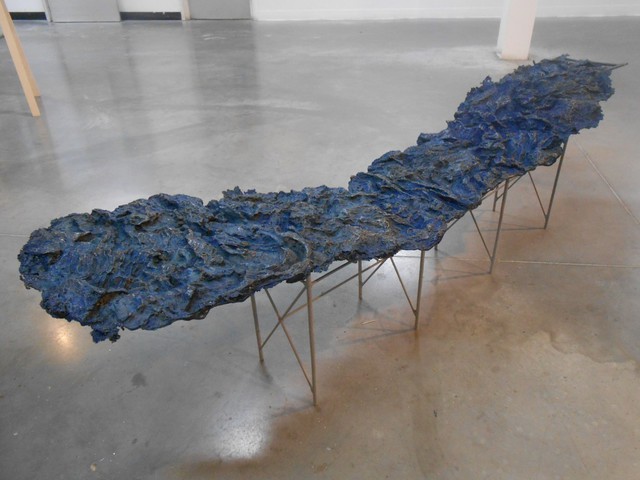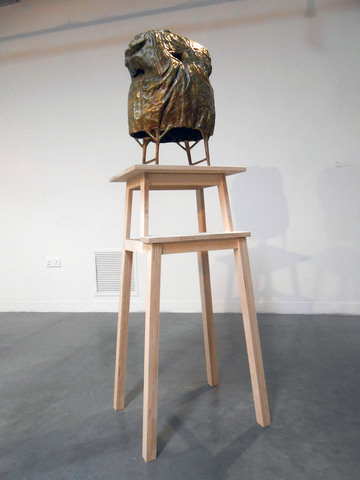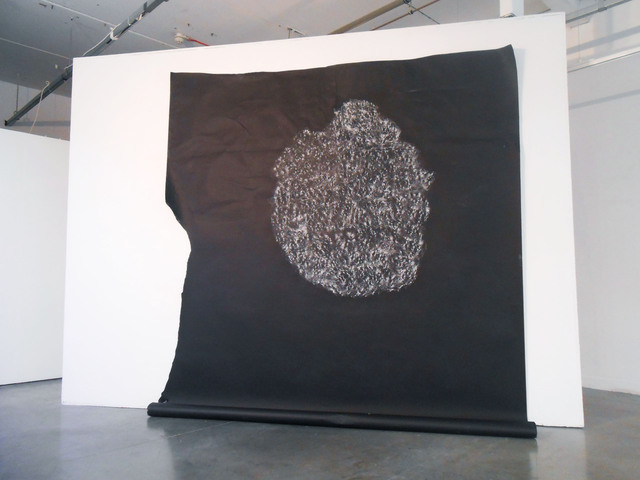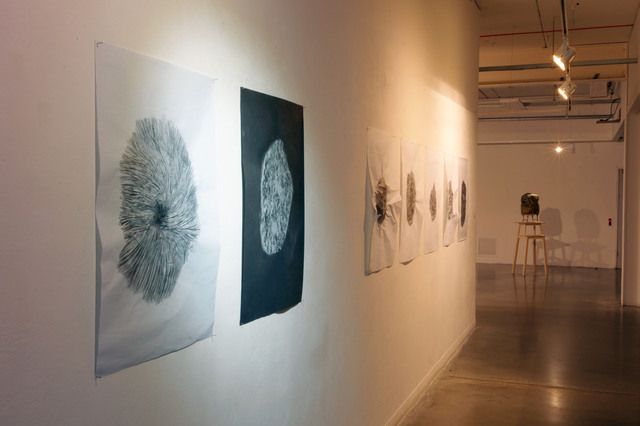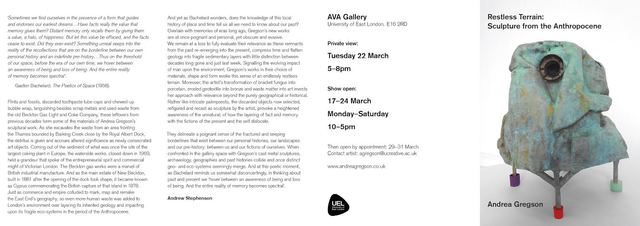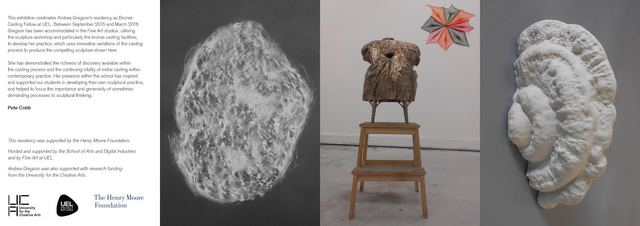In September 2015, Andrea Gregson began a Henry Moore Foundation artist residency in the Fine Art school at the University of East London. This new work explores sculpture within the context of the Anthropocene, the recently named geological epoch made entirely by human activity.
The works focus is on sculptures’ potential to transform and collapse matter, and draws attention to the connections between changing states. The casting process itself is an important part and can be seen as a mimicry of the forces of nature, with it’s potential to quickly and radically transform materials within our ‘human time’, as opposed to the protracted creation of fossils from the ‘deep time’ of geology. Restless Terrain refers to this transformation in material states: the change from liquid to solid, void to cast, waste to trophy and the mash up of the mass produced and nature, bound into new conglomerates. In this process, wax is an uncanny player with its ability to shape shift, rendering masks for objects. Itinerant Moraine is an aluminium cast of a glacial boulder, found at the edge of a small waterfall, during a recent residency at Outlandia, Scotland. Gregson cast the boulder in wax, carried it down the mountain and reproduced it in aluminium, echoing the relation between Ben Nevis and the aluminium smelter below.
Gregson is preoccupied with sculptures ability to fold time and space into an object, the intertwining of its story, the manufacturing process and the investment of the artists’ labour. She narrates the physical journey of objects, so that they come to represent a journey of ideas. The continued use of apertures and peepholes offers generous perspectives in to the hollows of the bronze. Cast from waste packaging they are literally inside out, playing with notions of surface and soul. Away from the surface driven experience of objects they hover at the intersection between culture and nature.
During the residency Gregson made several trips to the edge of the Thames, close to Cyprus, a location that holds multiple layers of history, in its geology and the industrial waste matter: flint nodules, rocks, coke from the old Beckton Gas works, charcoal, metal all carried along by the Thames and silted together into a random mass. Objects fracture and erode, transforming into a new materiality. One such piece of eroded geotextiles was salvaged from this site as an object on the fringe of the natural; now reconfigured into bronze it meanders in the gallery on a pier like structure off the ground, as a solid section of river. The sculptures locate a standstill, a new geology from the leftovers of a persons’ movement through time; offering up new perspectives of the broken landscape around us.

